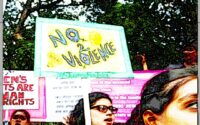Commission for sub-categorization of OBCs
This article is written by Ishita Agrawal from Mody University of Science and Technology
What is the sub-categorization of OBCs?
Under the Central Government, OBCs are granted 27% of reservation in education and jobs. The Supreme Court’s constitutional bench reopened the debate on sub-categorization of SCs and STs for reservation in September 2020 and when debate arose, only few communities have secured a part of 27% reservation among over 2,600 that were included in the Central List of OBCs.
Need for sub-categorization
For reservation, there were arguments for sub-categorization and creating categories within OBCs. It should ensure equitable distribution among all OBCs. Rohini Commission was held on 2nd October, 2017 for examination and they were given 12 weeks to submit its report but has been given many extensions since, the latest one being the 10th. The Centre had granted constitutional status to NCBC (National Commission for Backward Classes) before the Rohini Commission was set up.
What are the Commissions’ terms of reference?
Examining the inequitable distribution among the castes and communities which includes in broad category of OBCs of benefit of reservation to such classes including in Central List.
Norms, mechanism, criteria and parameters in a scientific approach for sub-categorization within OBCs to workout.
Identifying the castes, sub-castes, communities in the Central List of OBCs and classifying into their respective sub-categories.
These are the main three terms of reference, mentioned above and the fourth term of reference was included on 22nd January, 2020 when Cabinet granted it an extension.
Correction of ambiguities, inconsistencies, repetitions, errors of spelling and transcription in the central list of OBCs entries.
Why are so many extensions being given?
On 30th July, 2019 Commission sent the letter to the government and also noted several ambiguities from the sub-categorized central list of OBCs. Before preparing the central list of sub-categorized, the Commission’s opinion is to be clarified or rectified.
What progress has it made so far?
The Commission wrote a letter to the Government on 30th July, 2019 that it is ready with the draft report on sub-categorization.
Following the latest term of reference was given on 22nd January, 2020 to the Commission. In the Central List, it is studying the list of communities.
How smooth has its work been?
Various communities are comparing their representation in admissions and jobs. The Home Minister announced that in Census 2021, OBCs data will be collected but the government has been silent on this matter and it was on 31st August, 2018. Several groups of OBCs are demanding for enumeration of OBCs in the Census.
What have the findings been so far?
1.3 lakh central jobs given under OBC quota over the preceding five years, the Commission analyzed in 2018 and OBC admissions to central higher education institutions.
25% of all sub-castes classified as OBCs as 97% of all education and jobs seats have gone; 24.95% of these seats have gone to just 10 OBC communities.
Group-A Central government 16.51%
Group-B Central government 13.38%
Group-C Excluding safai karamcharis 21.25%
Group-C Safai karamcharis 17.72%
Zero representation in education and jobs out of total 37% and 2.68% in admissions and recruitment out of 994 OBC sub-castes have a total representation.
The Commission’s tenure has been extended by the Centre to examine sub-categorization of OBCs (Other Backward Classes) headed by Justice G Rohini till 31st July, 2021 (this year). Due to nationwide lockdown and even restrictions on travel imposed on account of the pandemic, the commission was not performing the task assigned to them.
Broadcasting Minister Prakash Javadekar and Union Information said that Narendra Modi (Prime Minister) had decided to give an extension. He said that this was due to circumstances which were affected by the COVID-19 pandemic, otherwise the work of the commission was ongoing.
Rs 1.92 crore have been spent on the Commission including salary, consultant fee and other expenses and the report is yet to be publicized. It is understood that the report will have huge political consequences.
If sub-categorization follows some conditions, then it will lead to beneficial results, if its fulfilled:
Make OBC quota proportional to their population and enumerate the OBCs.
Reservations of OBCs are fully implemented at all levels and censure the institutions not doing so.
In the public sector, increased the jobs of people.
Make sure, SC/ST/OBCs get the number of seats they are entitled to and plug all the loopholes in it.
The Communities which exist in the OBC list, have not been to get any major benefit of the scheme of OBC for reservation and for appointment in Central Government. Educations are expected to benefitted upon implementation of the recommendations of the Commission. Such recommendations are for the benefit of marginalized communities in the list of OBCs.
Expenditure involved related to the administration and establishment costs of the Commission. It would continue to be borne by the Department of Social Justice and Empowerment.
Persons who belong to the castes and communities are included in the Central List of SEBCs but have not been getting any major benefit of the existing scheme of reservation for OBCs in Central Government posts & admission in Central Educations would be benefitted.
Conclusion
Sub-categorization of the OBCs need not imply establishing a further social hierarchy within the communities included in the Central List on the basis of relative lowness or otherwise of their ascribed social status or traditional occupation. It is not hard to draw the conclusion that the OBC is treated as some sort of a compromised category. After all, the artisanal and service caste, who are supposed to be the main beneficiary of the sub-categorisation, deserve much more than a bureaucratic pipe dream.
Curated by Athita Albert of Kristu Jayanti College of Law, Bangalore.

